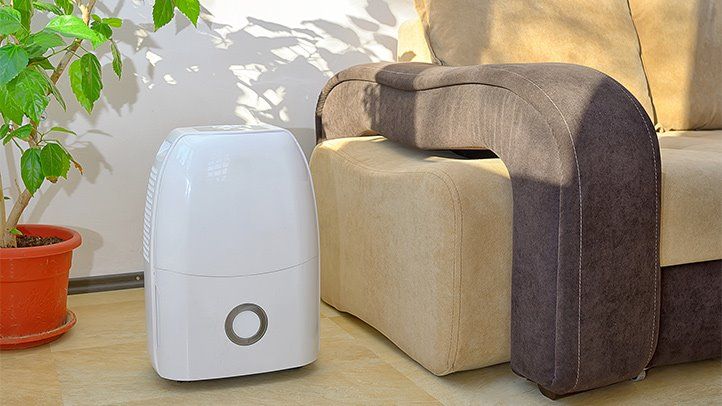Say No To Excessive Dehumidification.
Despite using a dehumidifier, do you have dry, itchy eyes, a sore throat, respiratory issues, cracked skin, or mold growth? Don’t know what to do about your soaring energy bills?
Please bear with me. We are aware of your issue.
There’s a lot of dehumidification going on! And here’s the answer:
At home, turn off the dehumidifier. Don’t leave it running 24 hours a day, 7 days a week.
Homeowners should be aware that dry air is more harmful than humid air. People must monitor home humidity levels for optimal health and well-being. You must turn off the dehumidifier when the relative humidity falls below 30% to 50%.
If there is too much dehumidification, say below 30%, bacteria, mold, and dust mites that thrive in low humidity conditions will develop. People claim that 45 percent RH gives one of the greatest degrees of comfort and wellness.
Switching on humidifiers or increasing ventilation is a smart way to replenish moisture. Otherwise, stagnant recirculated air will degrade indoor air quality and even infect your family.
Is it necessary to operate a dehumidifier all of the time?
Want to save money on your energy costs while maintaining excellent health? Then it’s better if you don’t use your dehumidifier all of the time.
When the relative humidity in your house or basement rises above 50%, turn on your dehumidifier.
Running a dehumidifier 24 hours a day, seven days a week increases power usage and electricity bills. If you want an automatic on/off feature, buy a dehumidifier with a humidistat integrated into the unit. These features will allow you to establish a humidity threshold and have the dehumidifier automatically detect dripping humidity levels and switch off.
Ensure that the humidity threshold is set to 30 or 45 percent. The compressor will automatically turn on and operate until the ideal relative humidity is attained if the moisture level rises. The compressor will cut off instantly if the humidity levels and airflow reach the preset values, allowing the device enough time to rest.
You should operate your dehumidifier for 12 hours each day for optimum dehumidification and extended life. These hours will give the device enough time to eliminate moisture from every square foot of space.
Do dehumidifiers shut off on their own?
To this question, the answer is a resounding yes.
A dehumidifier with auto on/off and auto shutdown capabilities may automatically switch on and off the device based on humidity control and water tank levels. When the integrated humidistat detects that the preset humidity levels have been achieved, the dehumidifier settings are immediately triggered to switch off the device. The same principle applies to the water reservoir. The dehumidifier shuts off automatically when the condensed water reaches the threshold limit of the reservoir, minimizing spills and flooding.
Is it preferable to use a dehumidifier in the summer or the winter?
Dehumidifiers must be used regardless of whether it is summer or winter when the relative humidity is high. Excess humidity in the summer or winter is harmful to your health and the structural integrity of your home.
Because the room temperature will be a little hot in the summer, you may chill and dehumidify your house with the dehumidifier air conditioner combo.
Lower room temperatures and high humidity have a stronger impact on indoor air quality in the winter, particularly in the basement, attic, and crawl space.
Doesn’t that sound like a contradiction?
We all know that the chilly winter air has a lower moisture content. But, like most people, we tend to overlook the interior variables that contribute to indoor humidity levels, especially in the cold. While external temperatures are in zero degrees Fahrenheit, using a clothes dryer, cooking, steaming, and caring for indoor plants raises interior relative humidity levels above 50%.
Water and ice leak into basements and attics through vents, increasing attic and basement humidity and reducing indoor temperatures throughout the winter.
You should also operate a dehumidifier during the winter months to protect your home’s health and structural integrity. However, do not leave your dehumidifier running for too long. Measure the temperature and humidity levels in each room with a hygrometer. In the winter, you may turn on or off the dehumidifier depending on the humidity level.
Low temperatures cause the compressor coils inside the dehumidifier to freeze. This issue causes the equipment to fail or cease operating entirely. To use a dehumidifier in the winter, make sure you locate efficient set point functionality.
A dehumidifier with a Hot Gas Valve (HGV) defrosting mechanism and auto defrost facility is an excellent choice. These features will thaw your dehumidifier unit automatically, preventing failures during the winter months.
What are the ideal dehumidifier settings in the winter?
Basements are especially susceptible to mold formation during the winter months due to the lack of sunlight and warmth. As a result, it’s critical to set dehumidifiers at roughly 50% humidity to reduce humidity and avoid a slew of interior issues.
In the summers, how should I set my dehumidifier?
The crucial question now arises. During the hot summer months, how should I set my dehumidifier at home?
It is really straightforward. According to iallergy.com, the relative humidity should be adjusted between 30% and 50% to maintain a healthy and pleasant house.

Mold and dust mites that cause respiratory allergies thrive in environments where the relative humidity (RH) is approximately 45 percent. In basement spaces, dehumidifiers can also be set to 60 percent or below RH to prevent mold growth. As a result, ensure that the optimum humidity level for a pleasant area is maintained during the summer.
Frequently Asked Questions:
How can I turn off the dehumidifier’s heat?
While removing high humidity and water damage, dehumidifiers produce some heat and noise. This slight temperature increase is ideal for water damage repair and restricted places like basements, attics, and crawl spaces. It removes allergies, molds, and mildew from the basement by drying up puddles and water vapor.
However, if you have a dehumidifier in your bedroom or living room that you wish to turn off?
For houses and basements, try ducting your dehumidifier or using an air conditioner or a high-speed fan.How do you turn a dehumidifier off?
To switch off the entire home or a single room dehumidifier, follow the procedures below.
1. Set the built-in humidistat to the maximum relative humidity percentage or the ‘off’ option. This will assist the dehumidifier in shutting down.
3. Turn the bypass duct damper to the ‘winter’ position or close it. Skip this step if your dehumidifier does not have a damper.
4. Remove the dehumidifier from the outlet, empty the water tank, and clean the filters.
5. Wipe and dry all surfaces of the dehumidifier, water tank, filters, and drain hose with white vinegar before storing to avoid mold and mildew formation.Why is my dehumidifier not turning off when the humidity level is reached?
It is impossible to turn off the machine even if the filter and fans are dirty and have reached the preset humidity level. Make that the dehumidifier is not in continuous mode and that the compressor is configured to switch off when the target humidity is reached. When the compressor shuts down, the dehumidifier shuts down as well.
The fan may not be able to stop due to ice in the coils. The fan will continue to operate even if the compressor is turned off until the unit is entirely defrosted.
Assume that after resolving all of the concerns mentioned above, the dehumidifier still does not shut off on its own. See the user manual menu or contact customer service with your name, email, and purchase information in such a case.Is it necessary to switch off the dehumidifier if the central air is on?
Air conditioners and dehumidifiers can work together. Air conditioners have chilled the area in numerous instances, balancing off the warmth of dehumidifiers. However, if you do not wish to use a dehumidifier, that is totally OK. While the central air conditioning is on, you may switch off the dehumidifier. There will be enough dehumidification and cooling to keep you comfortable.
Final Thoughts:
Have you lost track of how often we’ve stressed the need to turn off dehumidifiers after the RH has reached the optimal level? Dehumidifiers should be turned off at the appropriate times to save money, energy, and your health.
See our prior postings for evaluations on the best dehumidifiers for a low price, energy efficiency, and auto shut-off features. All rights are retained for our decisions.
- 10 Best Dehumidifiers in 2022 (Buying Guide) - August 2, 2022
- When Should I Switch Off My Dehumidifier? - October 16, 2021
- 8 Best Commercial Dehumidifiers in 2022 (Buying Guide) - October 5, 2021


